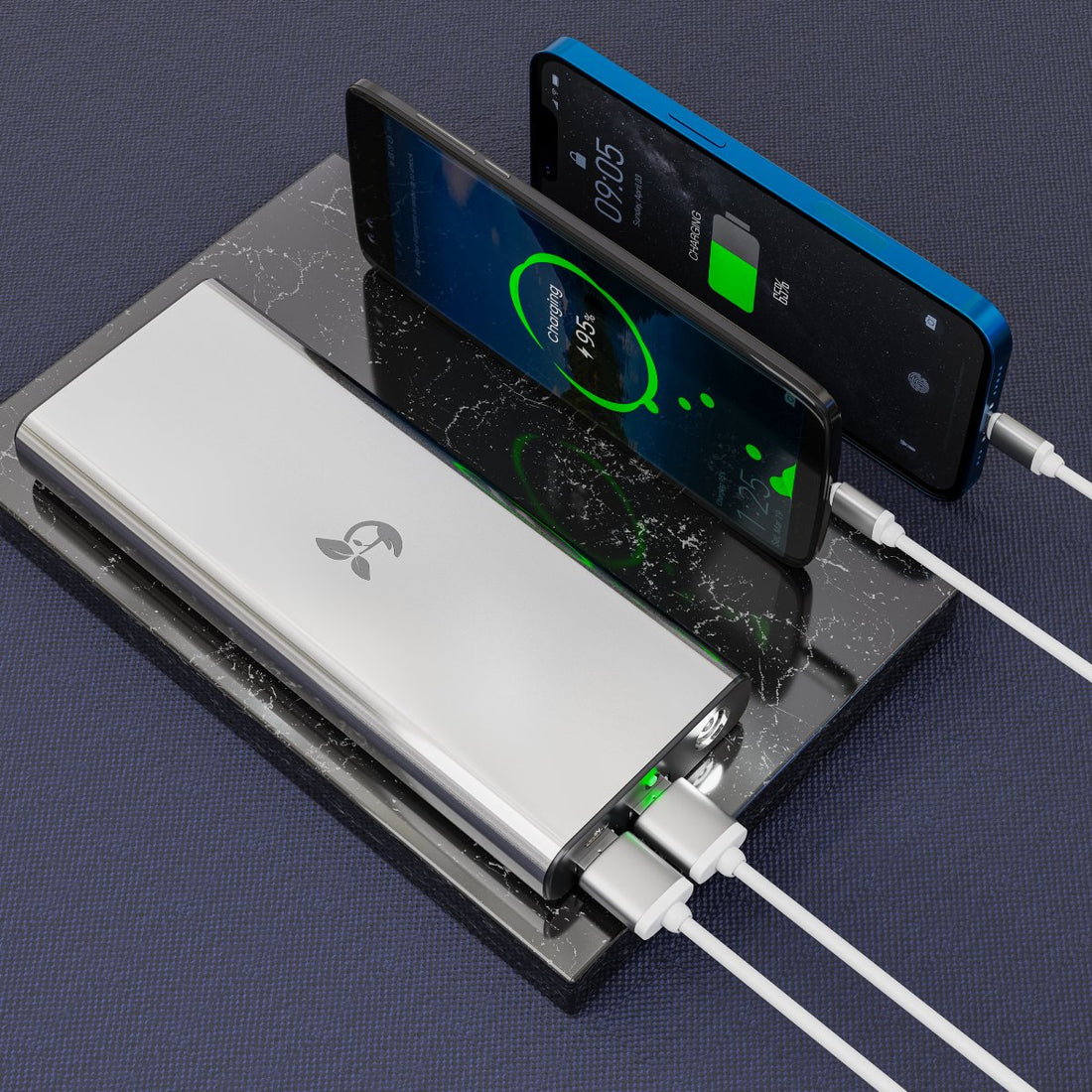Table of Contents
Power banks have become a ubiquitous accessory for our mobile devices. They are portable, convenient, and provide an extra power source on-the-go. However, not everyone understands the technical aspects of how power banks work, specifically in terms of voltage and current. In this article, we will provide an in-depth explanation of voltage and current in power banks and how they impact their performance.
What is Voltage?
Voltage, also known as electric potential difference, is the measure of the electric potential energy per unit charge in an electrical circuit. It is typically measured in volts (V). Voltage is what makes the electric charge flow from one point to another in a circuit. In the context of power banks, the voltage represents the amount of electric potential energy that the power bank can store.
What is Current?
Current, also known as electric current, is the flow of electric charge in an electrical circuit. It is measured in amperes (A). Current is what powers the electrical devices, and the amount of current that can flow through a circuit is determined by the resistance of the circuit. In the context of power banks, the current represents the amount of electric charge that the power bank can supply to a device.
How do Voltage and Current Affect Power Banks?
The voltage and current of a power bank affect its overall performance. Higher voltage and lower current can result in more efficient charging, whereas lower voltage and higher current can result in faster charging but with lower efficiency. It is important to note that the voltage and current of the power bank should match the device being charged to ensure safe and efficient charging.
Input and Output Voltage of Power Banks
Most power banks have both input and output voltage ratings. The input voltage refers to the voltage required to charge the power bank, while the output voltage refers to the voltage supplied by the power bank to charge a device. It is important to ensure that the input voltage of the power bank matches the charger used to charge it, and that the output voltage matches the device being charged.
Understanding mAh (milliampere-hour)
mAh, or milliampere-hour, is a unit used to measure the capacity of a battery. The higher the mAh rating of a power bank, the more charge it can store and supply to a device. It is important to note that the mAh rating alone does not determine the performance of a power bank, as voltage and current also play a significant role.
How to Choose the Right Power Bank
When choosing a power bank, it is important to consider the voltage and current ratings, as well as the mAh capacity. It is also important to consider the type of device being charged, as some devices may require specific voltage and current ratings. Additionally, it is important to choose a reputable brand and ensure that the power bank has safety certifications.
Advantages of High Voltage and Low Current:
Power banks with high voltage and low current ratings can offer several advantages over other types of power banks. One major advantage is that they can provide more efficient charging. This is because less energy is lost as heat during charging. When a power bank has a higher voltage, it can provide the same amount of power to a device with less current. This means that less energy is wasted as heat, resulting in a more efficient charging process.
Another advantage of high voltage and low current power banks is that they can provide more stable charging for devices with sensitive electronics. Some devices, such as smartphones and tablets, have sensitive electronics that can be damaged by voltage fluctuations. By providing a stable voltage during charging, high voltage and low current power banks can help protect these devices from damage. This can also help extend the life of the device's battery.
Advantages of Low Voltage and High Current:
Power banks with low voltage and high current ratings can also offer some advantages over other types of power banks. One of the biggest advantages is that they can provide faster charging for devices. This is because they can supply a higher current to the device, which can result in faster charging times.
However, there are some drawbacks to using low voltage and high current power banks. One potential issue is that they may be less efficient than high voltage and low current power banks. This is because more energy is lost as heat during the charging process. This can result in a less efficient charging process and may also cause the power bank to heat up more during use.
Another potential issue with low voltage and high current power banks is that they may not be suitable for charging devices with sensitive electronics. As mentioned earlier, some devices are more sensitive to voltage fluctuations than others. If a power bank with a low voltage and high current rating is used to charge a device with sensitive electronics, it could potentially damage the device.
In summary, both high voltage and low current power banks and low voltage and high current power banks have their own advantages and drawbacks. It's important to consider the specific needs of your devices when choosing a power bank, and to select a power bank that is compatible with your devices' voltage and current requirements.
Common misconceptions about voltage and current in power banks can lead to damage to the device being charged or even pose safety hazards. One such misconception is that higher mAh ratings always translate to better performance. While higher mAh ratings can mean more charge, it's crucial to keep in mind that voltage and current ratings also play a significant role in determining the overall performance of a power bank. Therefore, choosing a power bank based on mAh alone can lead to disappointing results.
Another common misconception is that it is safe to charge devices with any power bank, regardless of voltage and current ratings. This misconception can be particularly dangerous since using a power bank with incompatible voltage and current ratings can potentially cause damage to the device being charged. In extreme cases, this could lead to safety hazards such as overheating or explosion. To avoid such risks, it is important always to match the voltage and current ratings of the power bank to the device being charged.
In conclusion, selecting the right power bank requires a comprehensive evaluation of all the available specifications, including mAh capacity, voltage and current ratings, and compatibility with the device being charged. By considering all these factors and choosing a power bank with appropriate specifications and safety certifications, you can guarantee safe and efficient charging for your devices while on the go.

